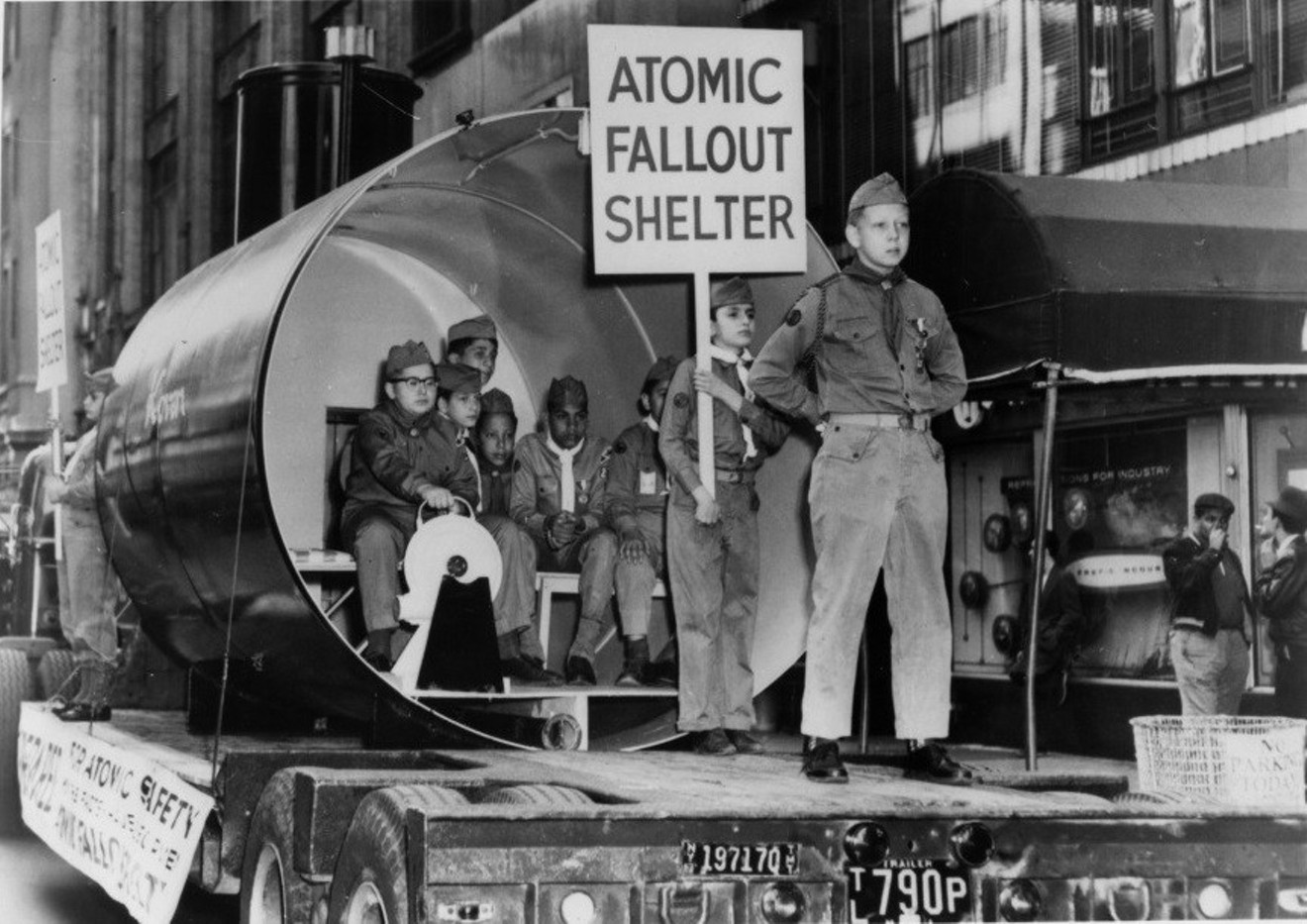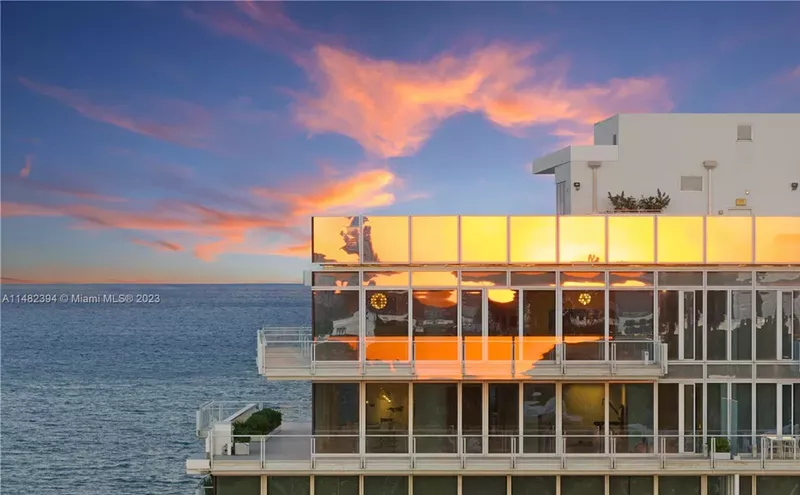A time capsule of a time capsule, the 1982 documentary compilation film The Atomic Café is suddenly, enragingly relevant again. There was a time — during the 1990s particularly — when Jayne Loader, Kevin Rafferty and Pierce Rafferty’s montage of newsreels, training films and commercials from the early years of the arms race seemed like both a cinematic and spiritual fragment of the past. The cloud of nuclear fear had lifted, or so we thought, with the end of the Cold War. But now the possibility of Armageddon is back in the news, in a more unpredictable fashion than ever before. And so here is The Atomic Café, beautifully restored, back to remind us how fucked we truly are, and perhaps have always been.
Both bitterly funny and heart-stoppingly upsetting, Loader and the Raffertys’ assemblage peered into America’s nuclear soul from the dawn of the Reagan era. The materials the filmmakers used may have come from the period between 1945 and 1955: footage of bomb tests, clips of presidents and military officials making solemn announcements, helpful public advisories about how to protect yourself from blast radiuses. But they spoke also to the twin poles of American public spirit in the early 1980s — a renewed, turbo-loaded fusion of warlike aggression and paranoia crossed with aw-shucks nostalgia and hazy idealism.
Partly for that reason, The Atomic Café is fueled by contrasts. Perhaps the biggest is between the toxic suspicion of the early Cold War and the candy-colored, middle-class optimism of the era. You can sense it in an elaborate anti-communist screed that turns into a promo for two local California shopping malls: “Who can help but contrast the beautiful, the practical settings of the Arcadia Shopping Hub and the Whittier Quad with what you’d find under communism?” And it’s even in a government-produced vignette of three soldiers on home leave from Korea berating a young female antiwar protester — a commie in glasses, of course, who claims war would be “world suicide.” “You look pretty well off, sister,” they yell, “to be tearing down the country that gives you free speech!” In other words: Shut up and enjoy your freedom of speech, lady.
These impulses may seem irreconcilable, but they’re not, really: A scared population, an unstable population, also spends more money, consuming more to fill its psychic hole of fear and uncertainty. And in juxtaposing these contrasts, The Atomic Café dares to suggest a certain sickness in the country’s soul, daring to poke fun at our perverse brew of utopianism and paranoia. Though Loader and the Raffertys avoid the kind of cheap-shot, out-of-context cutting that would become so fashionable in later compilation films, they earn their laughs by simply presenting all this footage, reveling in the seeming cluelessness of a generation that seemed to think nuclear attacks could be survived by ducking behind sofas, or that the greatest threat to freedom came from those who dared to not conform.
The Atomic Café at times feels like an essay film, but its points come across cumulatively, subtly. Loader and the Raffertys use a largely chronological structure to organize their footage. There’s no narration and very little onscreen text, just a steady drumbeat of clips and sound bites that portray how nuclear warfare went from a welcome announcement — the big new bombs that would end World War II — to an international arms race, an all-consuming aesthetic and a looming spiritual specter. But as the film presents it, with the passing of the years, the whipsawing of extremes between the reality of total worldwide destruction and the can-do spirit of mid-century optimism becomes ever more untenable. The movie fragments, purposefully. Its final scenes are essentially a montage of bomb test footage — showing the complete, fiery devastation unleashed by nuclear warfare — intercut with pathetic shots of families and students and pedestrians ducking under tables and behind walls. It all serves to underline the sheer inadequacy of individual effort on a planet with a newfound off switch.
[
{
"name": "Air - MediumRectangle - Inline Content - Mobile Display Size",
"component": "19274298",
"insertPoint": "2",
"requiredCountToDisplay": "2"
},{
"name": "Editor Picks",
"component": "17482312",
"insertPoint": "4",
"requiredCountToDisplay": "1"
},{
"name": "Inline Links",
"component": "18711090",
"insertPoint": "8th",
"startingPoint": 8,
"requiredCountToDisplay": "7",
"maxInsertions": 25
},{
"name": "Air - MediumRectangle - Combo - Inline Content",
"component": "17482310",
"insertPoint": "8th",
"startingPoint": 8,
"requiredCountToDisplay": "7",
"maxInsertions": 25
},{
"name": "Inline Links",
"component": "18711090",
"insertPoint": "8th",
"startingPoint": 12,
"requiredCountToDisplay": "11",
"maxInsertions": 25
},{
"name": "Air - Leaderboard Tower - Combo - Inline Content",
"component": "17482313",
"insertPoint": "8th",
"startingPoint": 12,
"requiredCountToDisplay": "11",
"maxInsertions": 25
}
]










